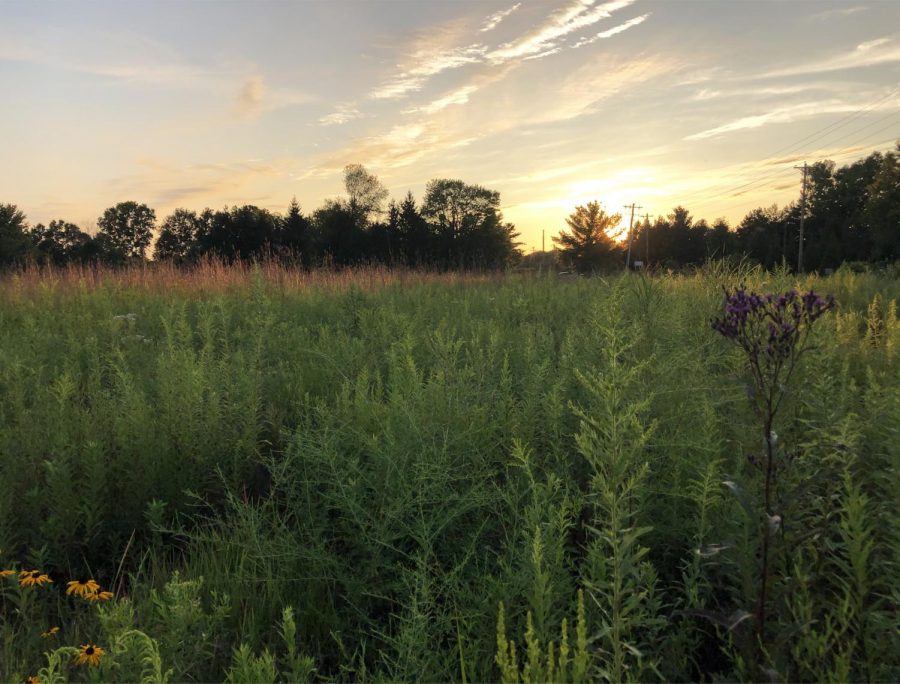The Western Reserve Land Conservancy, a Haven of Nature and History
The Western Reserve Land Conservancy is a prairie located on Hamilton Street, just west of the Oberlin Recreation Complex.
When I enrolled at Oberlin, I was excited to get out of the city and spend more time outdoors. Growing up in New York City, I never had a backyard or a nearby hiking trail on which to spend my afternoons; I rode the MTA and walked city blocks instead. When I saw an internship available for the Western Reserve Land Conservancy last fall, I quickly applied for the position and soon found myself immersed in everything I love.
My mornings and afternoons — really any time I wasn’t in class or doing homework — were filled up with trips to the prairie, where I worked to increase biodiversity and enrich the soil. The prairie I worked on, located in a wet meadow, is the perfect location for pollinators of all sorts, and I would find myself in the company of blue jays and butterflies in the early fall and spring. It became a space where I could go to spend downtime, not just work. I would run into my midday classes with dirt on my pants, hastily trying to finish a DeCafé sandwich.
As our lives become more and more digitized, it’s incredibly important to take some time away from our devices and immerse ourselves in this beautiful environment that we so often neglect. By spending an afternoon outside after work or taking time to decompress after a long day of studying — even to simply mindlessly stroll through the fields — we gain a much-needed reset that has vanished from our hectic day-to-day lives.
The prairie was purchased by Kate Pilacky of the Western Reserve Land Conservancy in 2015 and planted in 2017 to give the community a space to congregate and admire the natural beauty of Northern Ohio. It is located on Hamilton Street, west of the Oberlin Recreation Complex. One of its previous owners was the historical abolitionist John Anthony Copeland, Jr., who held an important role in the underground railroad. After Copeland’s stewardship, the prairie turned into a crop field used primarily for corn and soybeans. Rapid soil degradation followed, leaving the land in the poor condition that it is in now. By planting a biodiverse array of wetland grasses and flowers, the WRLC is actively restoring the land to its natural state. The Oberlin track and field team helps out every year by planting new seeds and creating water runoff pathways. The prairie is now equipped with bird boxes and a chimney swift tower.
The prairie is a safe haven for fauna and flora to grow and reproduce, but more importantly, it is a space where we, as Oberlin, residents can engage with and explore natural processes. Birdwatchers often come to spend mornings observing, and families come with children to run through the maze-like rows of flowers and grass.
By spending so much time in the prairie last fall and spring, I have grown closer to our natural environment and rekindled my love of the outdoors. I encourage you to do the same.
Special thanks to the Green Edge Fund and the Oberlin track and field team for their continued support.



